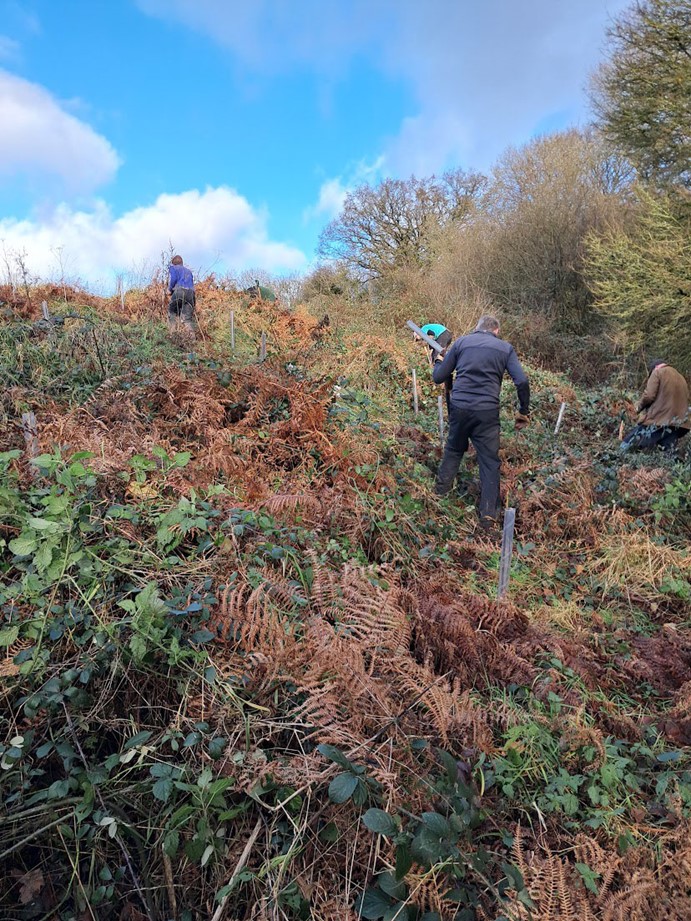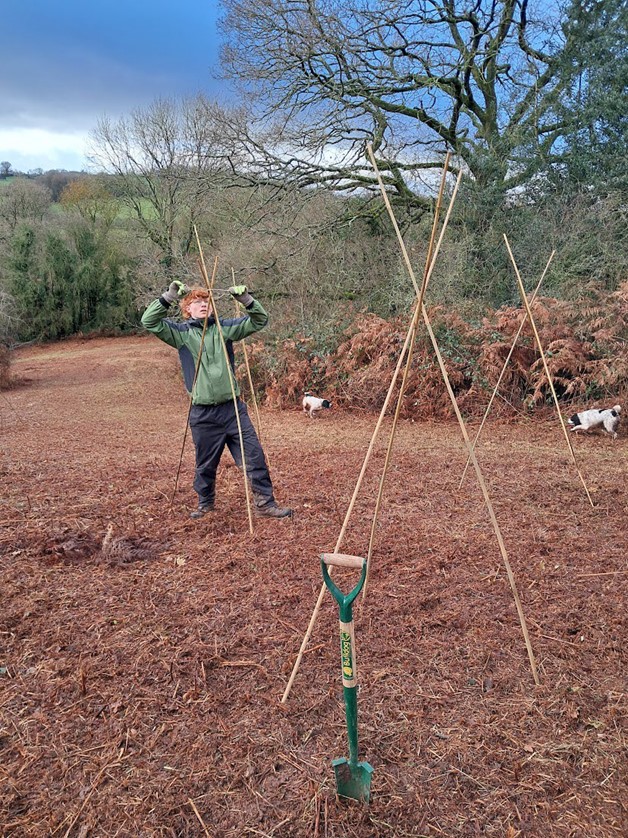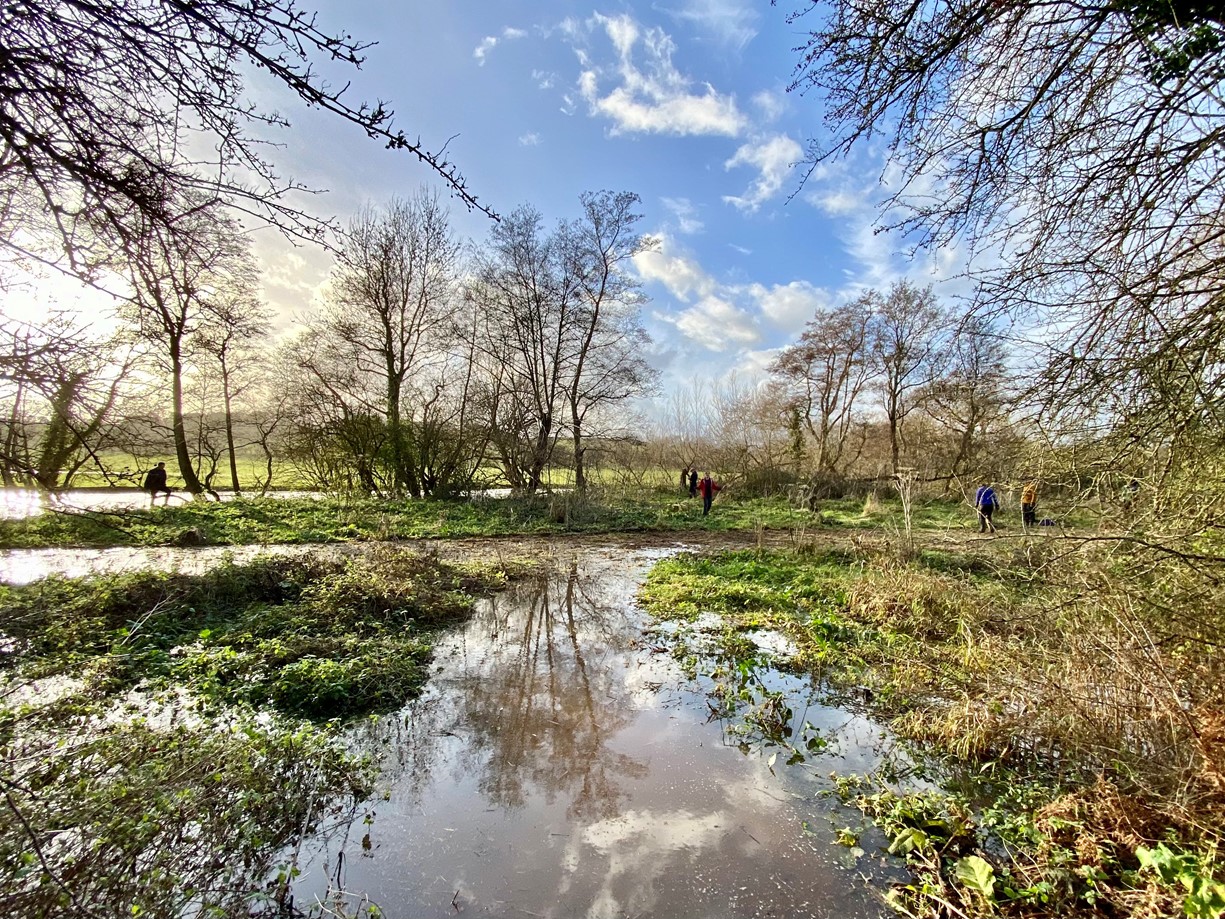Planting Diaries 1 - Pant Y Pwll

One of our first tree plants this December (2023) was on a smallholding called Pant y Pwll in the Afon Trothy | River Trothy catchment. This is a fascinating site that has been cared for by owners Dave and Jules and their family for several generations. They have preserved the original mosaic of small wildflower meadows, hedgerows and wooded copses that have sadly been lost on many larger farms in this area of Monmouthshire. Their fields lead down to the banks of the river Trothy and this provides yet another habitat with areas that are flooded for much of the winter.
We divided our 20 volunteers into 3 teams so we could focus on the unique challenges of each part of the planting site. The first group had the task of planting on a steep bracken-covered slope along the edge of the old orchard. We decided to experiment by choosing some of our faster-growing species, such as rowan and downy birch, for the densest bracken. This meant the saplings were in a good position to get growing before the summer. We also planted some of the trees among the brambles. These should act as natural tree guards and reduce the amount of plastic being used. Other species chosen for this area, cherry, spindle, and crab apple, are all perfect for attracting pollinators and providing food for birds in winter. They also provide a link to the fruit grown here in the past.

The second team continued the experimental nature of the day. They had a steep field that is now completely swamped by bracken for most of the year. It is so difficult to access that Dave had mowed the slope to allow us to get on site. Bracken is thought to be benefitting from warmer and wetter winters and now covers a significant amount of farmland in Wales. Since it cannot be grazed, tree planting is a useful way to gradually reduce the bracken and allow the pasture to recover. We decided to try out a new tripod system for protecting saplings from the bracken. The team planted the trees in groups of three and then put a tripod of stakes or canes around each group. The aim is that the bracken falls on the tripod and not the trees, and it can be removed in the late summer by the owner as part of ongoing site management.

A mix of fast and slower growing species were planted in each group, for example rowan grows faster than sessile oak, and this should help the trees to establish in succession. We also planted some species that would have been part of this landscape in the past but have almost disappeared. Wild service tree, for example, is a valuable addition in terms of providing fruit for migrating birds in autumn and has an important place in our cultural heritage. Jules is a keen botanist and has agreed to collect seeds for our community nursery from these trees in the future. This is an exciting opportunity for Stump to work in partnership with landowners to enrich the seed bank of the future.
Finally, we sent a team to the banks of the Trothy with wet-loving species willow and alder. The river was in full spate and had only recently overtopped the banks, so it was an ideal time for volunteers to see first-hand the issues surrounding flood management in this catchment area. Dave showed us how Offa Dyke’s footpath had been re-routed several years ago due to erosion caused by flooding. He described how chunks of bank and tree trunks regularly get washed downstream. Planting willow and alder should help to stabilise the banks and prevent further land being lost. There is an idea of weaving or pleaching the willow to provide extra support to the banks. This is another experimental methodology that has significant potential to assist landowners with flood management. After one of the wettest winters on record, this is a timely intervention that could help many other farmers in the area.

Rachel Embury
Operations Manager